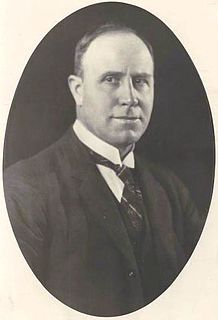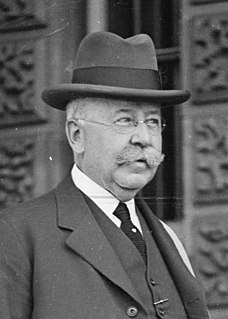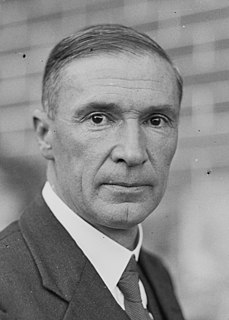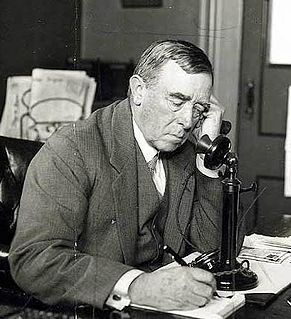| |||||||||||||||||||||||||||||||||||||||||||||
all 65 seats in the Victorian Legislative Assembly | |||||||||||||||||||||||||||||||||||||||||||||
|---|---|---|---|---|---|---|---|---|---|---|---|---|---|---|---|---|---|---|---|---|---|---|---|---|---|---|---|---|---|---|---|---|---|---|---|---|---|---|---|---|---|---|---|---|---|
| |||||||||||||||||||||||||||||||||||||||||||||
| |||||||||||||||||||||||||||||||||||||||||||||
The 1929 Victorian state election was held in the Australian state of Victoria on Saturday 30 November 1929 to elect the 65 members of the state's Legislative Assembly. [1]
| |||||||||||||||||||||||||||||||||||||||||||||
all 65 seats in the Victorian Legislative Assembly | |||||||||||||||||||||||||||||||||||||||||||||
|---|---|---|---|---|---|---|---|---|---|---|---|---|---|---|---|---|---|---|---|---|---|---|---|---|---|---|---|---|---|---|---|---|---|---|---|---|---|---|---|---|---|---|---|---|---|
| |||||||||||||||||||||||||||||||||||||||||||||
| |||||||||||||||||||||||||||||||||||||||||||||
The 1929 Victorian state election was held in the Australian state of Victoria on Saturday 30 November 1929 to elect the 65 members of the state's Legislative Assembly. [1]
The Nationalist Party had gained two seats in the Assembly since the previous election, having won two by-elections in seats held by independents. Henry Bodman (Gippsland South) died on 2 November 1927, and Walter West won the seat for the Nationalists on 3 December. [2] Speaker Oswald Snowball (Brighton), who had been disendorsed by the Nationalists in the previous election after voting against the redistribution bill, had rejoined the Nationalists since but died on 16 March 1928. Ian Macfarlan won the seat in the by-election on 24 April 1928. [3]
1929 Victorian state election [1] [4] | ||||||
|---|---|---|---|---|---|---|
| Enrolled voters | 682,190 | |||||
| Votes cast | 639,368 | Turnout | 93.72 | +1.96 | ||
| Informal votes | 6,830 | Informal | 1.07 | −0.87 | ||
| Summary of votes by party | ||||||
| Party | Primary votes | % | Swing | Seats | Change | |
| Labor | 247,251 | 39.09 | −2.70 | 30 | +2 | |
| Nationalist | 242,009 | 38.26 | +7.37 | 17 | ±0 | |
| Country | 55,876 | 8.83 | +0.70 | 11 | +1 | |
| Country Progressive | 33,798 | 5.34 | +1.18 | 4 | ±0 | |
| Communist | 1,962 | 0.31 | +0.31 | 0 | ±0 | |
| Independent | 51,642 | 8.16 | +1.98 | 3 | −3 | |
| Total | 632,538 | 65 | ||||
Notes:

Sir Thomas Rainsford Bavin, was an Australian lawyer and politician who served as Premier of New South Wales from 1927 to 1930. He was born in New Zealand and arrived in Australia at the age of 15, where he studied law and became a barrister. He served as personal secretary to Australia's first two prime ministers, Edmund Barton and Alfred Deakin. Bavin was elected to the New South Wales Legislative Assembly in 1917. He served two terms as Attorney General of New South Wales before leading the Nationalist Party to victory at the 1927 state election, in a coalition with the Country Party. His predecessor Jack Lang and the Australian Labor Party (ALP) defeated his government after a single term at the 1930 state election.

Sir Harry Sutherland Wightman Lawson KCMG, was an Australian politician who served as Premier of Victoria from 1918 to 1924. He later entered federal politics, serving as a Senator for Victoria (1929–1935) and briefly as a minister in the Lyons Government. He was a member of the Nationalist Party until 1931, when it was replaced with the United Australia Party.

George Michael "Mick" Prendergast was an Australian politician who served as the 28th Premier of Victoria. He was born to Irish emigrant parents in Adelaide, but he grew up in Stawell, Victoria. He was apprenticed as a printer, and worked as a compositor in Ballarat, Sydney and Narrandera before settling in Melbourne in 1887. A member of the Typographical Association, he represented that union at the Melbourne Trades Hall, of which he was President in 1893.

Edmond John "Ned" Hogan was an Australian politician who was the 30th Premier of Victoria. He was born in Wallace, Victoria, where his Irish-born parents were small farmers. After attending a Roman Catholic primary school, he became a farm worker and then a timber worker, and spent some time on the goldfields of Western Australia.

Sir William Murray McPherson, KBE was an Australian philanthropist and politician. He was the 31st Premier of Victoria.

Thomas Paterson was an Australian politician who served as deputy leader of the Country Party from 1929 to 1937. He held ministerial office in the governments of Stanley Bruce and Joseph Lyons, representing the Division of Gippsland in Victoria from 1922 to 1943. He played a leading role in the creation of the Victorian Country Party as the political arm of the Victorian Farmers' Union.
The Victorian Farmers' Union (VFU) was an association of farmers and primary producers formed in 1914 in the Australian state of Victoria. Although initially formed as an "absolutely non-political" entity, the VFU became a political party in 1916, and nominated candidates for the 1917 state election and subsequent elections. In later years it used the names Victorian Country Party, then United Country Party and is now the National Party of Australia – Victoria. At the 1917 election, because the support for the VFU was concentrated in rural seats, it won four of the 11 seats in the Victorian Legislative Assembly it contested, gaining about 6% of the vote state-wide. In 1918 it also won its first seat in the federal parliament, after preferential voting was introduced. At the 1920 state election the VFU vote increased to 8% and the number of seats to 13, giving the VFU the balance of power in the state Legislative Assembly.
Members of the New South Wales Legislative Assembly who served in the 28th parliament of New South Wales held their seats from 1927 to 1930. They were elected at the 1927 state election, and at by-elections. The Speaker was Sir Daniel Levy.</ref>
This is a list of members of the Victorian Legislative Assembly from 1927 to 1929, as elected at the 1927 state election:

The 1985 Victorian state election, held on Saturday, 2 March 1985, was for the 50th Parliament of Victoria. It was held in the Australian state of Victoria to elect all 88 members of the state's Legislative Assembly and 22 members of the 44-member Legislative Council. Since the previous election, the number of members of the Legislative Assembly was increased by 7 to 88.

The Bavin ministry was the 44th ministry of the New South Wales Government, and was led by the 24th Premier, Thomas Bavin, in a Nationalist coalition with the Country Party, led by Ernest Buttenshaw.

The 1940 Victorian state election was held in the Australian state of Victoria on Saturday 16 March 1940 to elect 44 of the 65 members of the state's Legislative Assembly.

The 1932 Victorian state election was held in the Australian state of Victoria on Saturday 14 May 1932 to elect 44 of the 65 members of the state's Legislative Assembly. The other 21 seats were uncontested.

Major Sir Thomas Karran Maltby was a politician in Victoria, Australia. He was a member of the Victorian Legislative Assembly for nearly 32 years from 1929 to 1961, served in several ministries and was Speaker of the assembly from 1947 to 1950.
The 1927 Victorian state election was held in the Australian state of Victoria on Saturday, 9 April 1927, to elect the 65 members of the state's Legislative Assembly.

Herbert Michael "Bert" Cremean was an Australian politician. He was a Labor Party member of the Victorian Legislative Assembly for the districts of Dandenong (1929–1932) and Clifton Hill (1934–1945). He was Deputy Premier of Victoria for four days in September 1943.

The 1924 Victorian state election was held in the Australian state of Victoria on Thursday 26 June 1924 to elect the 65 members of the state's Legislative Assembly.

The 1917 Victorian state election was held in the Australian state of Victoria on Thursday 15 November 1917 for the state's Legislative Assembly. 51 of the 65 Legislative Assembly seats were contested.
The Australian Liberal Party, also known as Progressive Liberals, was a minor political party that operated in the state of Victoria in the late 1920s.
The Australian Labor Party , commonly known as Victorian Labor, is the semi-autonomous Victorian branch of the Australian Labor Party (ALP). The Victorian branch comprises two major wings: the parliamentary wing and the organisational wing. The parliamentary wing comprising all elected party members in the Legislative Assembly and Legislative Council, which when they meet collectively constitute the party caucus. The parliamentary leader is elected from and by the caucus, and party factions have a strong influence in the election of the leader. The leader's position is dependent on the continuing support of the caucus and the leader may be deposed by failing to win a vote of confidence of parliamentary members. By convention, the premier sits in the Legislative Assembly, and is the leader of the party controlling a majority in that house. The party leader also typically is a member of the Assembly, though this is not a strict party constitutional requirement.